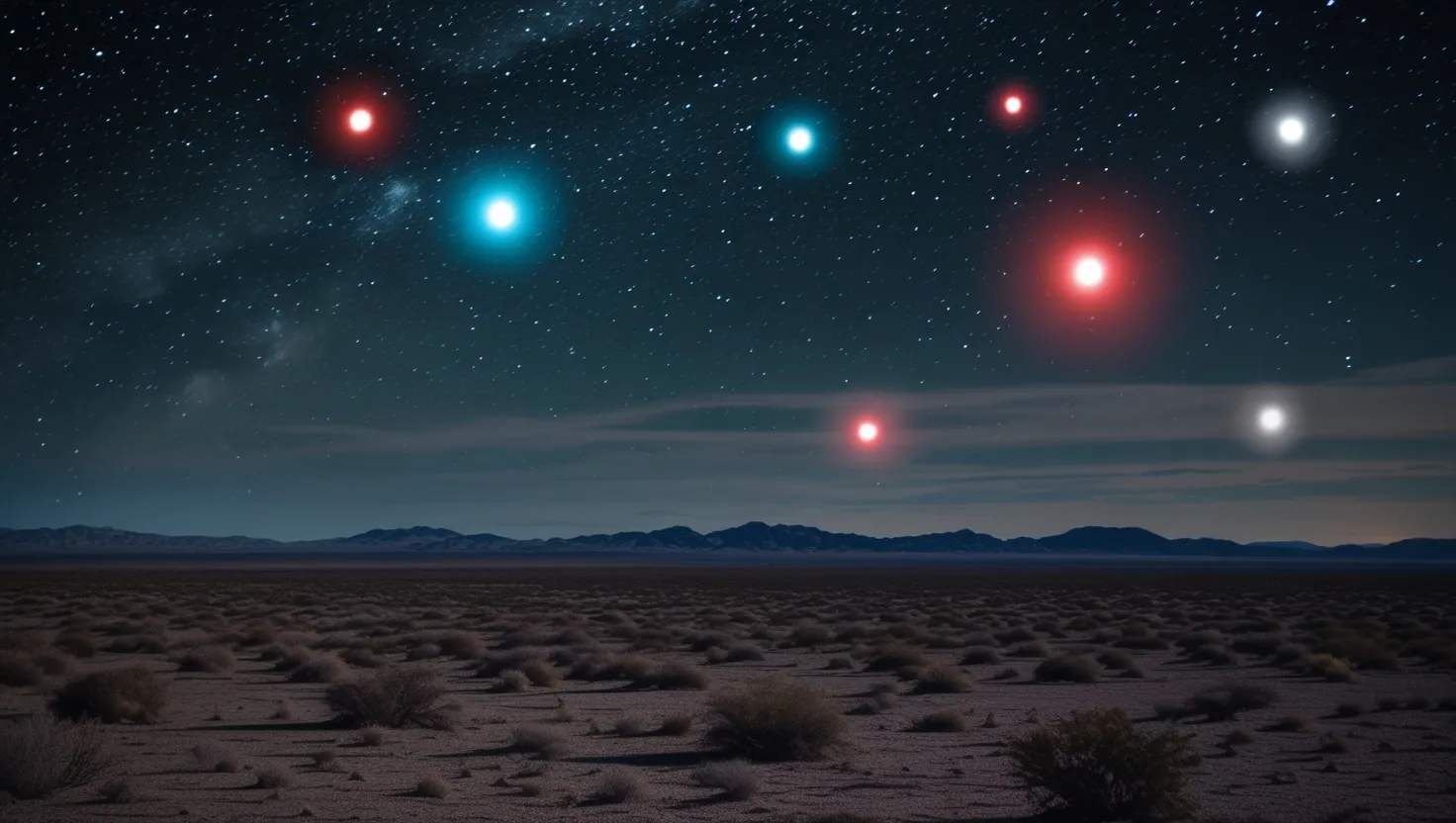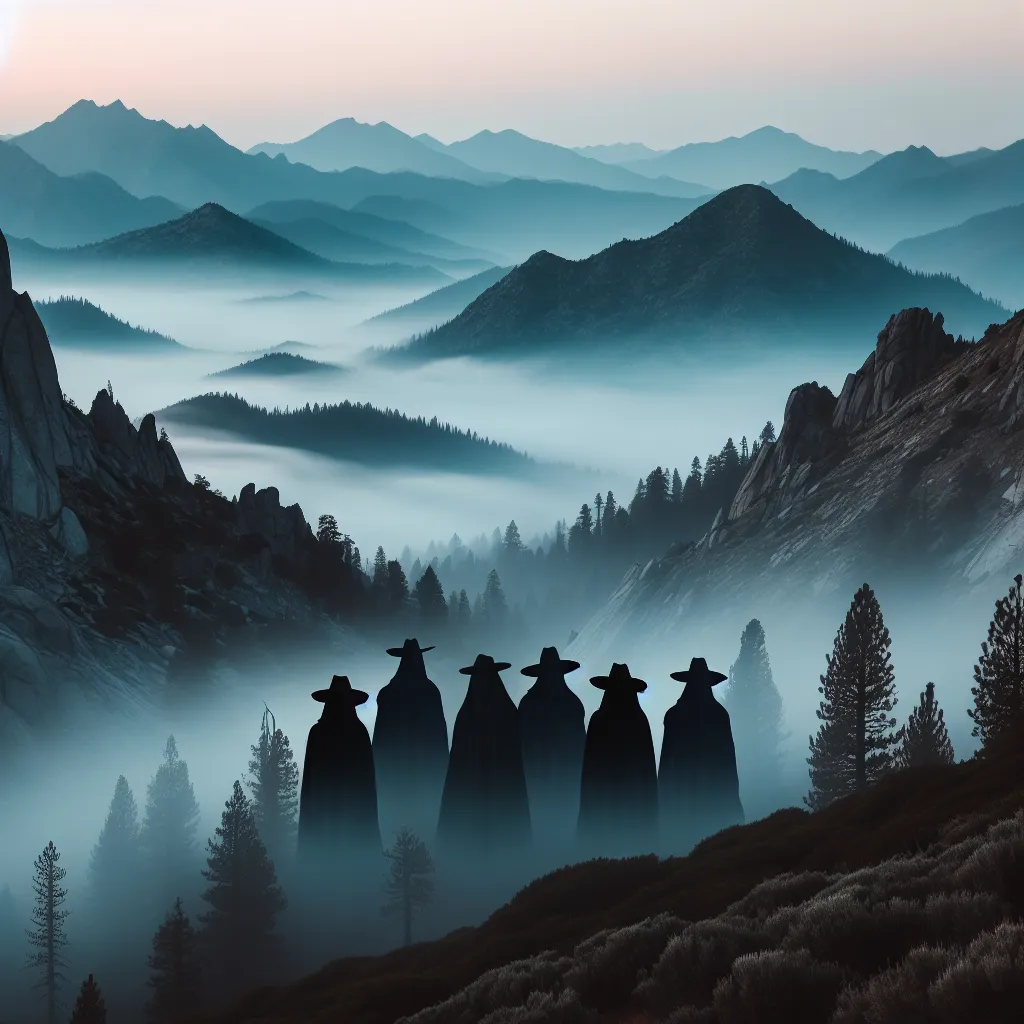Have you ever stood beneath a sky so big and empty, far from city lights, and felt that something out there was watching? Some of the world’s strangest light shows happen not where the crowds gather, but in places where loneliness settles in. Along the silent deserts, above forgotten swamps, and on riverbanks where the only audience is night itself, strange lights appear—playful, persistent, sometimes even intelligent-seeming. These are not stories told only in whispers; they’re repeatedly documented by scientists, photographed, and witnessed by whole towns. Yet no lab has bottled the answer.
Let’s move through seven places where mysterious lights still puzzle even the most seasoned skeptics. These are not fleeting glimpses, but steady phenomena—verified, measured, and still unsolved.
First, I want you to imagine the vast emptiness of West Texas. The Marfa Lights have been waltzing above the desert scrub since the days when the only witnesses were cowboys and Apache scouts. Sometimes they come as single orbs, sometimes as clusters. They change color—red to blue to white—hover, merge, and split again. Scientific teams have camped with sensors and telescopes, ruling out headlights, campfires, and even rare gases. But the lights return, sometimes for hours, always keeping their distance. The land remembers, even when the people change.
Switch hemispheres, and the Australian Outback offers its own luminous companion: the Min Min Light. Here, the sky is so wide that constellations seem to touch the ground, and the dancing orbs keep pace with travelers—sometimes following a car for miles, sometimes skittering just above the red dust. Aboriginal stories talk about these lights as spirits or lost souls, but Australian universities have tried to find answers using instruments and cameras. The lights defy explanation, ignoring the boundaries of folklore and lab science alike. Imagine being far from help, your only friend a light that won’t let you be alone.
“Not only is the universe stranger than we imagine, it is stranger than we can imagine.” — J.B.S. Haldane
Then there’s the legend of Brown Mountain in North Carolina. Here, colored flares drift over the ridge, mostly in autumn, sometimes on schedule, sometimes as if summoned by curiosity. Since 1913, newspaper men, geologists, and even the U.S. government have watched for answers. The area lacks highways and industry—no source of the glows in sight. Some call it plasma, others a mirage, but the orbs don’t care for theories; they appear night after night, watched by those patient enough to climb the mountain and wait in the dark. What keeps these lights coming, year after year?
Let’s linger a moment by the Mekong River, where every autumn, crowds gather for a yearly spectacle: the Naga Fireballs. These red spheres shoot straight from the water, climbing tens of meters into the sky before vanishing without a sound. Fishermen, monks, and tourists all swear by what they see. Skeptics call it phosphine gas, but tests show no chemical buildup—and the lights ignore the river’s slow changes, coming as they always have, as if tied to the heartbeat of the river itself. How does a light burst from muddy water, year after year?
“Somewhere, something incredible is waiting to be known.” — Carl Sagan
In the shadowed woods of Michigan, you might stumble on the Paulding Light. Tucked deep in swampland, this steady white beam stands alone—far from any road, refusing to be mapped from the air or the ground. Locals have tried every trick, from shutting off highways to clearing brush, but the light just flickers, pauses, and sometimes disappears, only to return. If it’s a car, whose car is it when all the roads are gone?
Railway legends run deep, and North Carolina has its own: the Maco Station Light. The story is heavy with freight—an old tale of a lantern-toting signalman decapitated in a crash, his lamp swinging in the dark. Yet for eighty years, people reported a bobbing light along the abandoned tracks, even after the railroad was pulled up. Once the bridge was finally removed, the light at last faded from memory. For decades, though, it was real enough for engineers to stop the train and for children to wait by the rails, hoping for a glimpse.
“It does not do to leave a live dragon out of your calculations, if you live near him.” — J.R.R. Tolkien
Finally, Arkansas offers the Gurdon Light—a blue-white pulse floating above railway ties, sometimes steady, sometimes darting. Modern scientists have brought spectrum analyzers to pin down its wavelengths, but the readings come back strange, not matching any known terrestrial source. If you stand still enough, you might feel the hair on your arms lift, as if the light itself is searching for you. What does it want? Why has it chosen this one patch of forest, this single stretch of abandoned rail?
Why do these lights persist? What draws them to the same lonely places again and again? Ball lightning and swamp gas can explain a flash or two, but these are lights with habits, with favorite haunts and recurring games. Sometimes they seem to play with those who watch, moving toward a group only to vanish when a camera appears. Sometimes they are shy; sometimes brazen.
Each sighting brings scientists armed with new ideas—thermal inversion, static electricity, piezoelectric effects from rocks, even mirages. Yet the data rarely make sense. Instruments record heat, then cold. Some lights are picked up on radar, moving faster than any bird or plane. Others don’t show up in spectroscopes, as though they exist outside the colors we can see.
“You don’t have to have an opinion about everything, but you do have to be willing to ask the question.” — Neil deGrasse Tyson
What if we are not asking the right questions? Is it possible that these lights are not entirely physical, or that they represent a kind of natural phenomenon that science has no language for? Some researchers have even wondered if these events represent new physics—or perhaps, a kind of earth-based consciousness. It’s no surprise that many cultures, from the Cherokee to Thai villagers to Outback Australians, see the lights as visitors, ancestors, or animal spirits. These stories may carry wisdom science has yet to honor.
Are these lights trying to communicate, or are they just side-effects of a planet not yet fully understood? Could they be living phenomena, a natural counterpart to bioluminescence in deep oceans? Why do so many appear near places of natural energy—fault lines, mineral deposits, bodies of water with unusual currents or magnetic properties?
And what about the people drawn to these places? Some come seeking thrill, some want proof, others simply want to know they aren’t alone in what they’ve seen. There’s a pattern: wherever the lights appear, communities form, stories grow, and questions multiply. Amateur scientists share data; professional physicists recalibrate their tests. Year after year, the lights resist every attempt to trap them in a theory.
“We live on a placid island of ignorance in the midst of black seas of infinity, and it was not meant that we should voyage far.” — H.P. Lovecraft
I find myself wondering if one day, a new technology—an instrument we haven’t yet invented—will explain these events as easily as rainbows or northern lights. Until then, these persistent glowing visitors challenge us to keep watching and to accept that sometimes, the world is bigger, stranger, and more familiar than we expect. When you next find yourself in a remote landscape, far from the hum of electric lights, look up. Stay patient. What else might be out there, waiting to be seen?






